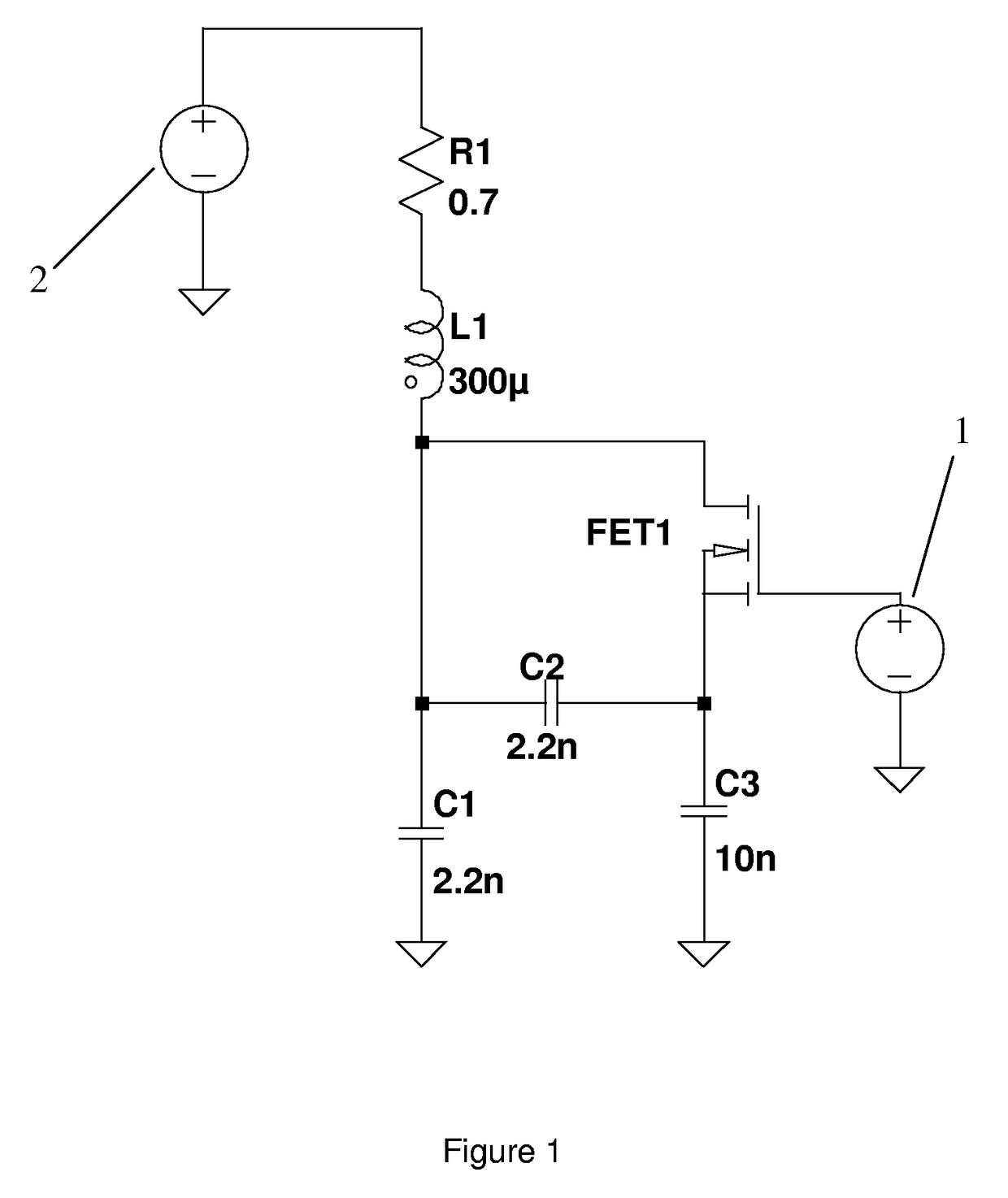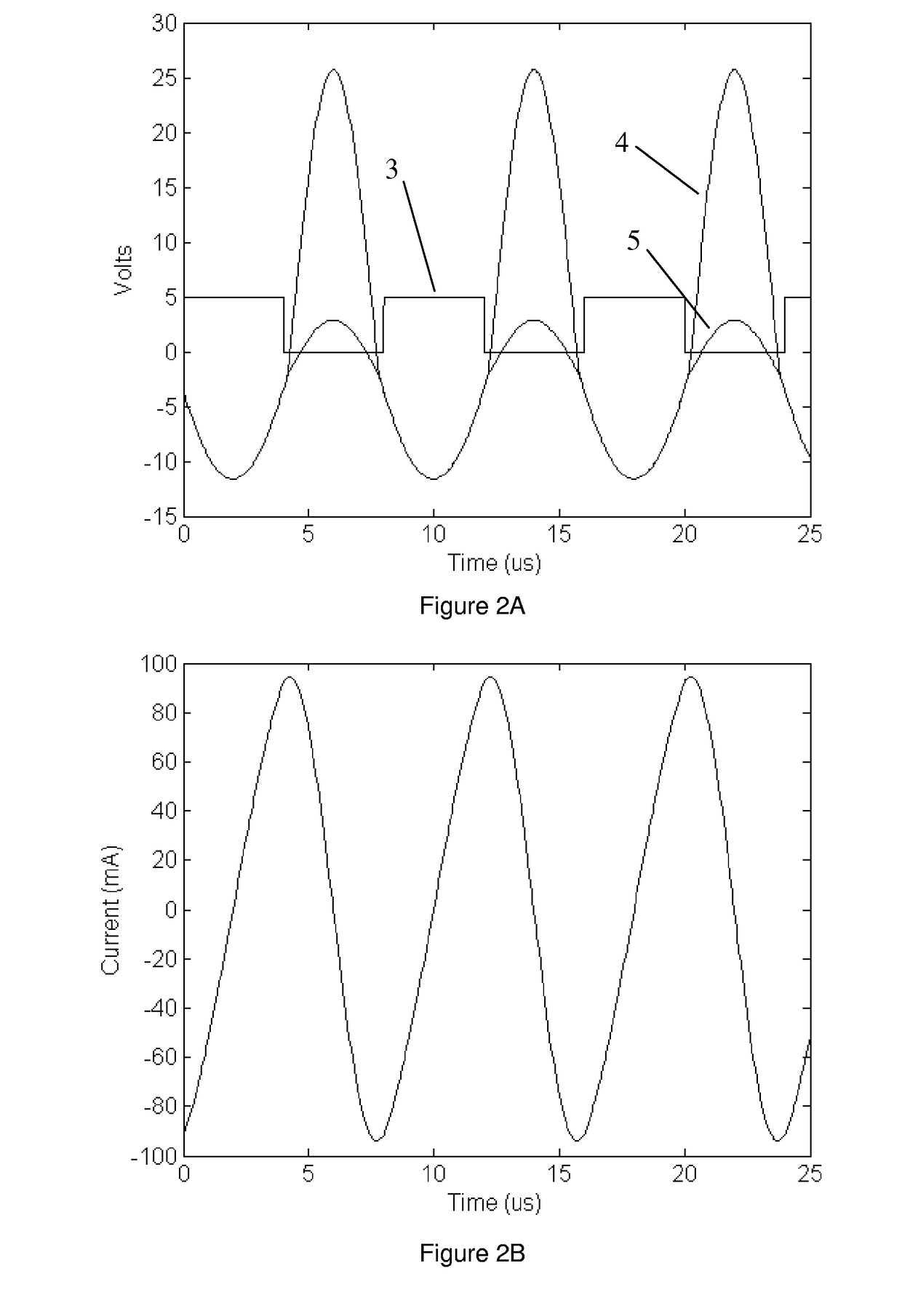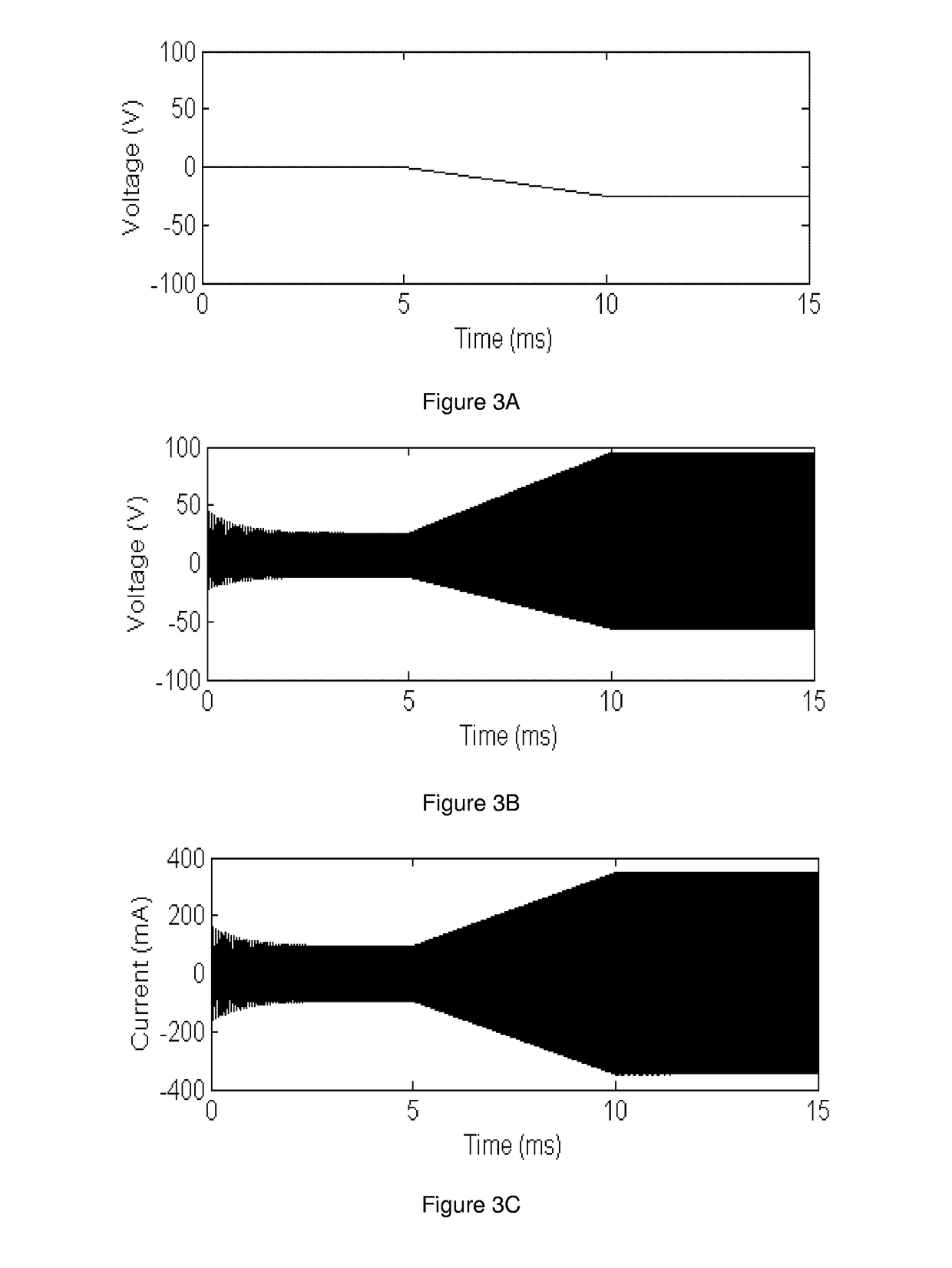Resonant circuits
a technology of resonance circuit and circuit, applied in the direction of generator stabilization, pulse manipulation, pulse generator, etc., can solve the problems of limiting the operation range, limiting the read range, and limiting the energy transfer efficiency between the two circuits, so as to reduce the effect of chirp decay, and reduce the effect of chirp
- Summary
- Abstract
- Description
- Claims
- Application Information
AI Technical Summary
Benefits of technology
Problems solved by technology
Method used
Image
Examples
second embodiment
[0093]FIG. 5 shows an alternative embodiment of the invention. In addition to the n-type PET shown in FIG. 1, this embodiment also includes a p-type FET. The state of the n-type FET changes on the negative cycle of the FET drain, and the p-type FET changes on the positive cycle. For low amplitudes both FETs are non-conducting, whereas for high amplitudes both are conducting. The design equations for the frequency limits at 0% duty cycle and 100% duty cycle (duty cycle is the fraction of the cycle that at least one of the FETs is conducting) are as follows:
[0094]f100%=1π(L·(C1-C3)+L·(C1+C5))f0%=1π(L·(C1+(C2-1+C3-1)-1)+L·(C1+(C4-1+C5-1)-1))
[0095]The values shown in FIG. 5 give a frequency range of f100%=104 kHz and f0%=147 kHz. When setting the amplitude of the resonance with the gate voltages Vgate1, 15, and Vgate2, 16, this is done in a similar manner to the single FET version of the first embodiment except that these voltages should go in opposite directions...
third embodiment
[0097]FIG. 6 shows an embodiment of a circuit which can be used to extract power from an rf field, for example for an RFID transponder, or other remotely powered device. This circuit is driven by an rf field in which it is located. Power can be taken from the circuit at any convenient point, for example across C1 and rectified. To provide a return signal from the transponder power from the circuit may, for example, be used to power an rf oscillator which can be modulated with the return signal. The transponder inductance is increased relative to the earlier 300 μH transmitting antenna example (FIG. 1). This is to increase the induced voltage in the transponder in response to an oscillating field. The capacitors C1, C2, C3 are reduced by the same factor resulting in the same frequency range as the first embodiment (f50%=106 kHz, f0%=145 kHz). The Q of the transponder is set by the coil effective series resistance (R1), which has been set to 10Ω in this example, giving a high Q of app...
fourth embodiment
[0111]In a fourth embodiment, the circuit shown in FIG. 1 is used in free decay, rather than steady state excitation. When used in free decay, the duty cycle of FET conduction is determined by the decay waveform, and changes as a function of time. The resultant behaviour is a chirp signal, rising in frequency as the energy in the circuit decays. This embodiment may be used in a reader to detect the presence of a transponder and / or its resonant frequency.
[0112]A 4 μs square voltage pulse of amplitude 5V is applied to Vstimulus, 2, and the FET gate voltage, 1, is kept at 0V. FIG. 10A shows the decay of the FET drain voltage and FIG. 10B shows the antenna current. The drain voltage is asymmetric when the FET duty cycle is non-zero, which is a natural consequence of the two different capacitances coupled into the resonance. The antenna current on the other hand is more symmetric.
[0113]FIG. 10C shows the instantaneous frequency of the chirp as a function of time. The chirp starts off at ...
PUM
 Login to View More
Login to View More Abstract
Description
Claims
Application Information
 Login to View More
Login to View More - R&D
- Intellectual Property
- Life Sciences
- Materials
- Tech Scout
- Unparalleled Data Quality
- Higher Quality Content
- 60% Fewer Hallucinations
Browse by: Latest US Patents, China's latest patents, Technical Efficacy Thesaurus, Application Domain, Technology Topic, Popular Technical Reports.
© 2025 PatSnap. All rights reserved.Legal|Privacy policy|Modern Slavery Act Transparency Statement|Sitemap|About US| Contact US: help@patsnap.com



